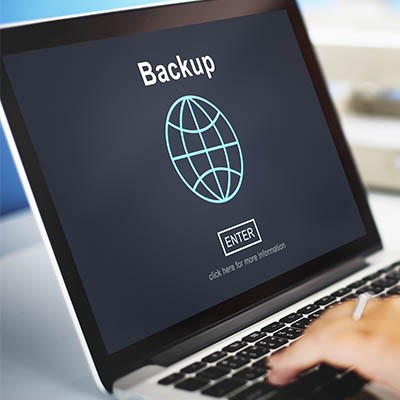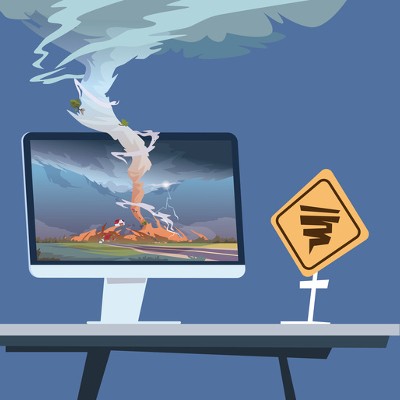PCSOFT Blog
It’s not always hackers that create dangerous situations for your organization. Threats can come from even unforeseen locations, such as your business’s network. No matter what the threat is, though, you have to be extremely careful about the little things that spell doom for organizations just like yours. One of these is failing to have a data backup solution in place.
Losing a smartphone can be a problem for anyone. For the modern business, it can really cause issues. Mobile devices are notorious for housing a lot of personal information, which makes them extraordinarily dangerous to lose track of. How much is at stake with mobile devices going missing; and, what kind of information is stored on these devices that makes them so dangerous to misplace?
With several large storms, wildfires, earthquakes, and floods trampling major cities all over the world, the concept of data backup and disaster recovery is a particularly relevant topic. Business owners must confront whether or not they are prepared to handle such events, because if they don’t, they’ll be risking the future of their business.
According to the Federal Emergency Management Agency (FEMA), 40 percent of small businesses never truly recover from a disaster. This jarring statistic, along with every single article about data loss and disaster recovery, should be enough to convince business owners to prepare for the worst. Yet, they don’t, and it’s often too late.
To ensure that your organization doesn’t forget the most important rules of business continuity, consider the following statements:
- Your data will always be at risk, regardless of where it’s stored. No location is completely safe from a natural disaster.
- Your physical infrastructure will be affected, but so will many other organizations'.
Business continuity planning is one of the most important things that businesses fail to implement before it’s too late to do anything about it. In a recent article published in The Hartford, five businesses struggle to stay afloat following a natural disaster. They describe all of the nightmarish events that happen after the disaster, and the difficulties of recovering from such a devastating incident. Each business faced different challenges, though. One company had to repurchase machinery and inventory that was damaged during the disaster, while another simply found that most businesses they had been working with prior to the disaster were no longer in operation, thereby threatening their business with lack of sales.
If you learn any lesson from these stories, it’s that proactive thinking and planning for the future can make all the difference between your business’ survival, and its failure.
Here are seven of the most important parts of business continuity planning, and why you’ll want to focus on them.
Important Documents and Records
You need to preserve any paper documents that are critical for your business’ success. You should try to keep multiple copies of your documents for storage in both your on-site office and off-site, just in case your office isn’t left standing or is unreachable. You should consider the 3-2-1 rule as well, which we’ll go into more detail later.
Here are a few examples of important business documents:
- Deeds
- Leases
- Insurance Papers
- Certificates/Licenses
- Banking Records
- Hard Copy of Business Continuity Plan
Contacts and Communications
The most critical asset a business has is their workforce. Social media has implemented features that let users tell their friends and family that they are safe and sound, and that’s for one reason: it’s terrifying to lose contact with someone you care about during a disaster. You should establish and maintain contact lists to ensure you know who has managed to escape the wrath of the disaster. You also need to retain communication lines, including via a phone call, text message, or email. You can have a web page set up so that your employees can update you with their whereabouts in the event of a disaster, which can be helpful if they’re unable to send a voicemail or make a call. You should be especially certain that your critical staff know how important they are to operations so that you can establish modes of communication with them.
Alternative Locations and Mobility
Virtualization and mobility are the keys to ensuring that your business can survive a disaster--particularly if you want to set up a secondary location in the event your primary site is unavailable for work. Virtualization services and the cloud allow employees to work remotely as well, so even if you have no office, there might be a possibility to continue operations. In situations like this, be sure to explicitly state when you expect to resume normal operations.
Vendor and Critical Client Lists
You want to make sure that you know who your important vendors and clients are following a disaster, as they will certainly be instrumental in your recovery. You want to ensure that you can inform them of your situation so that there is no miscommunication with whether or not you can fulfill your agreements. If you are able to resume operations, you’ll want them on your side so that business as usual can resume.
Data Backup and Hardware Replacement
Your data is one of the most critical parts of your business, and without a way to recover it, you’re just another business starting over following a disaster. You must make sure that your data is backed up regularly and stored in multiple locations. Furthermore, you must test the backups to make sure they are working as intended.
Planning for Emergencies
This section mostly contains what you want to do in the event of an emergency while you’re in the office. You should set aside provisions such as flashlights, batteries, water, and more, just in case something happens and you can’t escape the office. These supplies should be stocked and checked regularly. Furthermore, you want to plan out emergency exits, meeting points, and an inventory of important items. This is all just in case you need to file an insurance claim.
Review, Update, and Test Important Components
The importance of reviewing your data backups cannot be overstated, but that’s not all you should be testing. You need to check phone numbers, a roster of key individuals, and your alternative site of operations so that you can continue operating in case of the worst.
Is your business prepared to handle the worst data loss incidents and natural disasters? To find out, reach out to us at 02 98730080.





